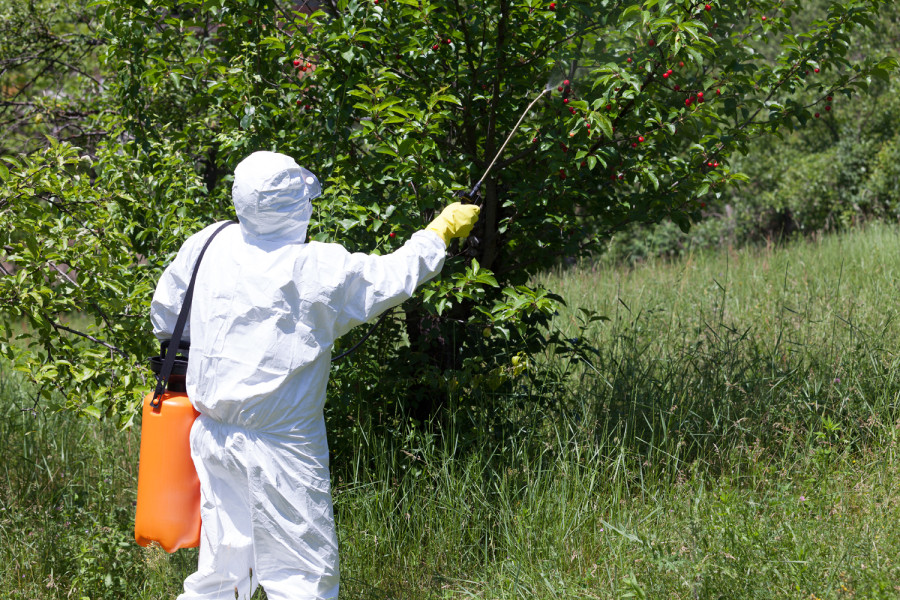Opinion
Integrated pest management
The method offers an entry point to organic production systems for a healthy society.
Yubak Dhoj GC
In recent decades, the plant protection scenario in most parts of the developed and developing countries has undergone dramatic changes. The emphasis has shifted from chemical pesticides to less and less use of these compounds. The concept of pest triangle examines the link between the environment, pathogens and the host to remove pests by causing the least damage to the environment. This method requires an understanding of the seven Ps—plant, pest, pathogens, predators, parasitoids, pesticides and people.
There has been growing concern about the adverse effects of chemical pesticides on agriculture, human health and the environment as a whole. The Integrated Pest Management programme was initiated to combat the negative consequences of chemical pesticides while controlling agricultural crop pests. The goal of Integrated Pest Management is improving economic benefits and reducing potential risks to human health and the environment caused by the pests themselves or pest management practices. In developed countries, this programme emerged in the 1960s. However, it does not have a long history in Nepal where the term Integrated Pest Management was first heard in 1997.
The basic philosophy of this approach is very sound as it strives to grow healthy crops while considering a better environment. It arose out of the need to avoid problems of pest resistance build-up leading to pest resurgence, secondary pest outbreaks, human health problems, expensive pesticide control and environmental degradation caused by excessive and inappropriate use of chemical pesticides. The approach has become closely associated with enabling farmers to make crop protection decisions with full awareness of factors operating in their agro-ecosystems.
Integrated Pest Management is a nature favoured approach and is simple and easy to adopt, but it can be complex if it is misapprehended. It increases the sustainability of farming systems and improves ecological sustainability, as it relies primarily on environmentally friendly processes including the use of pest resistant varieties—the actions of natural enemies and cultural control. Integrated Pest Management is economically sustainable as it reduces farmers’ dependence on procured inputs. This method addresses far more than pest management as it offers an entry point to improve the farming system as a whole.
Against this backdrop, the government of Nepal has banned dozens of chemical pesticides and tightened regulatory measures. Although Nepal consumes a very small quantity of pesticides (around 396 grams per hectare) compared to other South Asian countries (750-5,700 grams per hectare), their use in cotton, tea and vegetable appears to be excessively uncontrolled and bereft of consideration of the health of consumers. Pesticide misuse in the country is primarily associated with ignorance among farmers and lack of alternatives. As a result, pesticide problems have been reported in many non-target organisms such as natural river fishes, wildlife, predators and parasitoids; and pesticide residues have been detected in food grains and fresh vegetables.
Field reports from various sources indicate that alternative measures are lacking, and a heavy reliance on pesticides has created concern among the producers, consumers and policymakers and planners. Overuse, misuse and abuse of chemical pesticides with regard to dose and frequency are very common, and several environmental hazards and adverse effects on human beings are evident. Given this, alternative control measures are urgently required. Based on the present outcomes of the Integrated Pest Management programme in Nepal, further issues need to be addressed immediately, which includes pursuing a holistic crop production approach by increasing the area under the Integrated Pest Management programme, increasing the volume of Integrated Pest Management produce, and implementing capacity building in entrepreneurship development.
Along with these areas, there is a need for continuous support for capacity building for additional human resources. At the same time, new intervention requires addressing recent issues like climate change and its effect on insect pests and diseases outbreak so that most of the plant production issues can be addressed. This might be possible with the implementation of Integrated Crop Management beyond Integrated Pest Management. The most important step would be to internalise and institutionalise the past learning of Integrated Pest Management, and not only within the public frame but also within the private sector. Moreover, translation of the better learning into future programmes through a coordinated approach of public and private organisations may yield tangible outcomes.
Considering these aspects, the real scenario of Integrated Pest Management in Nepal is at the initiation phase, however, public efforts are insufficient to cater to present needs. This could be possible through the launching of Integrated Crop Management in a collaborative effort. At the same time, there needs to be a coordinated approach from public as well as private organisations. The impact of the Integrated Pest Management programme may not be evident until products such as monitoring tools and bio and botanical pesticides are available in the market. This will further open avenues for an organic production system which will produce a healthy and decent society by creating a better environment.
GC is secretary of the Ministry of Agricultural and Livestock Development.




 7.12°C Kathmandu
7.12°C Kathmandu










%20(1).jpg&w=300&height=200)

